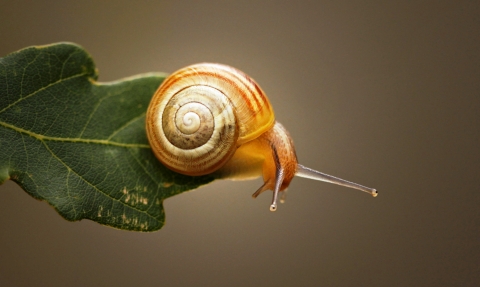
Jon Hawkins
Pest or guest?
Friend or foe?
Each garden is a miniature ecosystem. The creatures within it determine what thrives, survives, deteriorates or dies. By using the wildlife friendly pest control measures listed below, you can achieve equilibrium in the garden.
By attracting a rich diversity of bug life, you'll also encourage animals such as hedgehogs, frogs, toads and slow worms.
Beneficial insects
For a successful wildlife garden, it is best to adopt a ‘live and let live’ philosophy, which means allowing a balance of good and bad insects to exist for their mutual benefit. Below are a list of desirable garden predators and how to attract them.
Ladybirds and Lacewings
Ladybirds are invaluable in the garden - both adult and larvae feed on destructive pests such as aphids, thrips, mealy bugs and mites. Some ladybirds even feed on powdery mildew fungal spores.
Another ‘must-have’ insect is the lacewing, which offers the wildlife gardener two for the price of one, as once again both the adult and ferocious looking larvae eat aphids, mites, leafhoppers and scale insects.
Lorna Griffiths
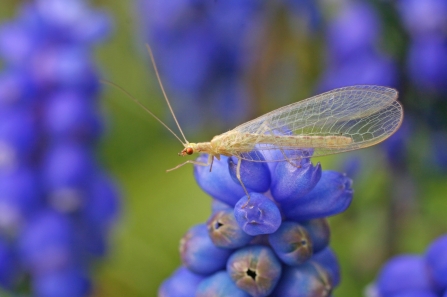
Rachel Scopes
Hoverflies
The adult hoverfly, with its black and yellow stripes, mimics the wasp; but it is completely harmless and should be encouraged into the garden. The maggot-like larvae munches aphids by the dozen before emerging as an adult.
Plants that attract hoverflies include: Phacelia tancetifolia, poached egg plant, michaelmas daisy, sedum spectabile and candytuf, angelica, teasel and scabious.
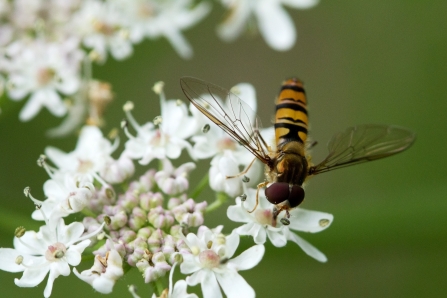
Al Greer
Wasps
Although not everyone's favorite, the social wasp is of great use around the garden. The grubs of the wasp are fed almost entirely on caterpillars and other insects. By the end of the summer a nest may have consumed up to 250,000 insects.
Solitary wasps also feed their young on flies, aphids and caterpillars, and therefore should be encouraged into the wildlife garden.
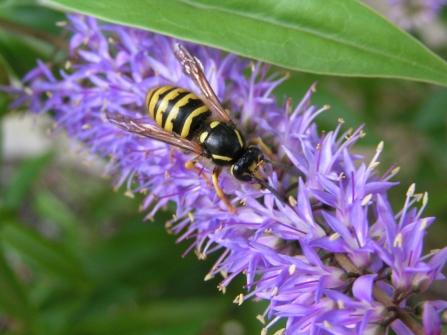
Richard Burkmar
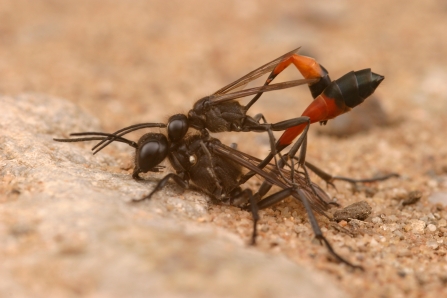
Scott Tilley
Woodlice
Bibble-bugs, tiggy-hogs and fairy’s pigs are all former names for the woodlouse. These creatures are important in the breakdown of plant material. By eating decaying matter they help to retain nutrients in the soil. Encourage woodlice to your garden by building a log pile, compost bin or stone heap.
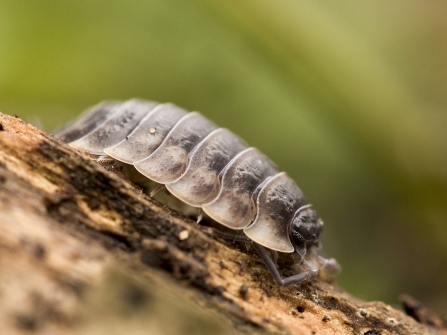
Chris Lawrence
Pest deterrents
By including plants that repel pests you can help reduce their impact on your garden, whilst avoiding chemical controls will help beneficial insects and other wildlife to thrive.
Pest deterrent plants
Nettles
Leave a patch of nettles in one corner. Not only do they attract peacock, red admiral, painted lady, small tortoiseshell and comma butterflies, they are also a magnet for snails, drawing them away from precious vegetables and flowers.
Recommended plants to repel pests include:
✓ Tansy
✓ Marigold
✓ Mint
✓ Catnip
✓ Wormwood
✓ Chives
✓ Dill
✓ Fennel
✓ Rosemary
✓ Oregano
✓ Thyme
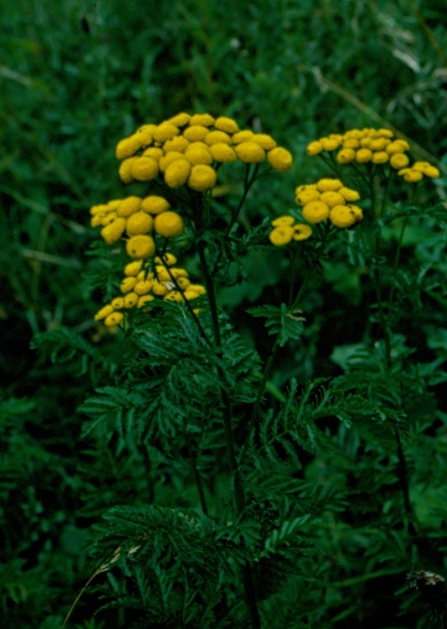
Alex Davies
Companion planting
Growing certain plants together can be a pesticide free way to help protect them from pests or improve pollination of fruit and vegetable crops.
Most companion plants are strongly scented and confuse pests looking for their host plant. Others attract beneficial insects, such as ladybirds and lacewings, which prey on aphids.
Recommended companion plants
Marigolds
Marigold repels whitefly from tomatoes and can lure aphids away from beans. It also attracts beneficial insects such as ladybirds, lacewings and hoverflies, which prey on aphids.
Mint
The strongly scented leaves of mint confuse the pests of carrots, tomatoes, alliums and brassicas and deter flea beetles. WARNING - grow it in a pot, or it could smother your crop.
Thyme
Thyme makes a good companion plant for roses, as its strong scent deters blackfly. Making a tea made from soaked thyme leaves in water to spray on your cabbages can prevent whitefly.
Garlic
Garlic chive can be planted alongside carrots. Its strong scent confuses and deters the carrot root fly, which can normally smell carrots from up to a mile away.
Lavender
Lavender attracts a range of pollinators, including bees, butterflies and hoverflies. Its strong scent can also deter aphids. Plant with carrots and leeks to confuse pests.
Sage
Sage is strongly scented and will confuse pests of brassicas if planted alongside them. Its blue flowers attract bees and hoverflies, which also pollinate crops.
Borage
Borage has blue flowers that are a magnet for pollinators, such as bees, butterflies and hoverflies, which pollinate crops. If planted nearby, borage can prevent attack from tomato hornworm and is said to improve the flavour of strawberries.
Nasturium
When planted with French and runner beans, the nasturtium acts as a sacrificial crop, luring aphids away from the beans. Its attractive flowers help attract beneficial insects, which prey on aphids.
Fennel
If left to flower, fennel produces pretty yellow blooms that attract hoverflies, which prey on aphids.
Chemical alternatives
Chemical pesticides don't just kill pests, they will harm the animals that eat them too. This is especially true of slugs and snails, which are eaten by birds, hedgehogs and slow worms. Try some of the chemical free control methods listed below to help control a variety of pests in your garden.
Slugs and snails
Slug traps
Buy or make your own slug traps using yoghurt pots buried in the soil around your plants and fill with cheap beer or milk. Ensure the lip of the pot is at least 2cm clear of the soil so that ground beetles cannot get in.
Dig over your soil
Dig over your borders or vegtable plot in winter when the ground is cold and any slugs and their eggs will be exposed and killed or eaten by predators.
Copper
Copper interacts with slug slime to produce a tiny electric shock. Place copper tape around pots or copper rings around your most at-risk plants to repel all but the most determined slugs.
Nematodes
Try slug nematodes - a slug parasite that only targets slugs and is harmless to everything else.
Barricades
A ring of sharp grit, crushed egg shells, pine needles, ground coffee, ash or soot around a plant can help keep slugs and snails at bay.
Aphids
Spray infested plants with a mild solution of washing up liquid or strong jet of water. Plant nasturtiums in your vegetable plot to attract them away from your produce.
Red spider mite
In a greenhouse use the biological control, Phytoseiulus persimilis, a predatory mite.
Log piles
A pile of logs in a shady corner makes a good home for many of the garden’s welcome guests. Frogs, toads, shrews, hedgehogs, ground beetles, centipedes and rove beetles will all use a log pile for a home. Site the log pile in an area that is shady for most of the day with cover nearby. Try to use a mixture of different types of woods, 15 – 25cm in diameter and preferably with the bark still on. Avoid treated wood. You could even site a hedgehog box under it.
Scott Petrek
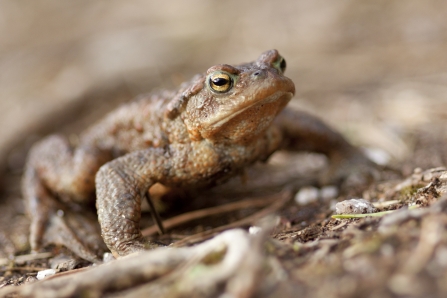
Tom Marshall
Composting
A compost pile provides an excellent home for a number of beneficial garden residents such as slow worms and beetles, as well as pests, drawing them away from garden plants and flowers. Composting is also a great alternative to buying peat based compost, which is bad for the environment, and a cheap way to restore nutrients to your garden.
Compost bins can be made from old shipping pallets or other timber, or you can buy them from most garden centres or DIY stores. Whatever bin you choose, it must have a rainproof lid that does not blow away and a large top opening that enables you to turn the compost with a fork.
Compost bins do not have a base so excess liquid can drain away. Some bins have a removable front or ’chute’ at the base to allow you to extract rotten compost from the bottom of the heap. Check this is big enough to get a spade easily in and out.
What to compost
- Grass clippings and leaves
- Soft, leafy plants including annual weeds
- Fruit and vegetables and their peelings (excempt citrus fruits and onions)
- Ground coffe and loose tea or teabags made form natural materials
- Some pet waste/bedding
- Prunings and hedge trimmings (ideally shredded),
- Woodchip
- Leaves
- Paper and card (torn up or shredded)
- Straw
- Plant stems
- Sawdust from untreated wood
- Poultry manure
What not to compost
- Teabags made from synthetic materials
- Meat (unless you are using a meat compatible compost bin)
- Coal ash
- Citrus peel and onions (the acid kills worms)
- Glossy or coated paper
- Sawdust from treated wood
- Large branches or pieces of wood
- Plastics
- Cat litter & dog faeces
- Disposable nappies
- Glossy magazines
How to compost
Turning the heap
Turning your compost heap regulalrly with a garden fork or spade adds air, which is needed for the process of composting to occur. Aim to turn your compost around once a month.
Moisture
Keep your compost heap moist in dry weather and avoid getting it too wet as this will hamper the composting process.
How long does it take?
Garden compost takes between six months and two years before it is ready to use. Garden ready compost will be dark brown, have a crumbly soil-like texture and an earthy damp smell.
Remove any un-rotted material back to the compost bin, to be mixed with your next batch.
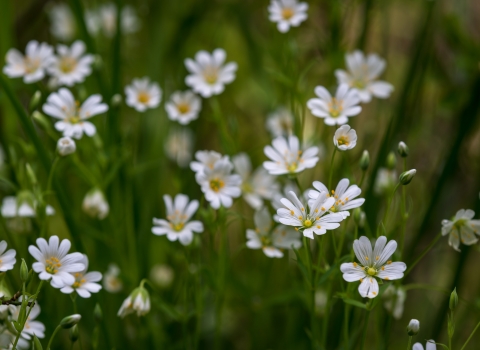
Alan West






